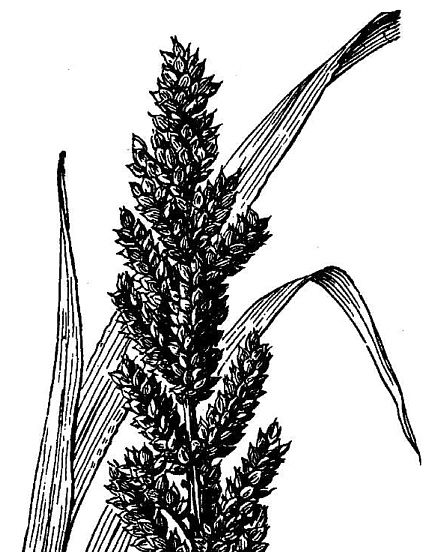

Zitierweise / cite as:
Carakasaṃhitā: Ausgewählte Texte aus der Carakasaṃhitā / übersetzt und erläutert von Alois Payer <1944 - >. -- Anhang A: Pflanzenbeschreibungen. -- Echinochloa frumentacea (Roxb.) Link. -- Fassung vom 2007-07-10. -- URL: http://www.payer.de/ayurveda/pflanzen/echinochloa_frumentacea.htm
Erstmals publiziert: 2007-07-10
Überarbeitungen:
Anlass: Lehrveranstaltung SS 2007
©opyright: Dieser Text steht der Allgemeinheit zur Verfügung. Eine Verwertung in Publikationen, die über übliche Zitate hinausgeht, bedarf der ausdrücklichen Genehmigung des Verfassers
Dieser Text ist Teil der Abteilung Sanskrit von Tüpfli's Global Village Library
WARNUNG: dies ist der Versuch einer
Übersetzung und Interpretation eines altindischen Textes. Es ist keine
medizinische Anleitung. Vor dem Gebrauch aller hier genannten Heilmittel wird
darum ausdrücklich gewarnt. Nur ein erfahrener, gut ausgebildeter ayurvedischer
Arzt kann Verschreibungen und Behandlungen machen!
Falls Sie die diakritischen Zeichen nicht dargestellt bekommen, installieren Sie eine Schrift mit Diakritika wie z.B. Tahoma.
Verwendete und zitierte Werke siehe: http://www.payer.de/ayurveda/caraka0001.htm

Abb.: Echinochloa frumentacea (Roxb.) Link
[Bildquelle:
http://plants.usda.gov/java/largeImage?imageID=eccrf_001_avd.tif. -- Public
domain]
"Physical Characteristics Annual growing to 1.8m by 0.15m.
It is hardy to zone 0. It is in flower from July to September, and the seeds ripen from September to October. The flowers are hermaphrodite (have both male and female organs) and are pollinated by Wind.The plant prefers light (sandy), medium (loamy) and heavy (clay) soils and requires well-drained soil. The plant prefers acid, neutral and basic (alkaline) soils. It cannot grow in the shade. It requires moist soil. The plant can tolerates strong winds but not maritime exposure.
HabitatsCultivated Beds;
Edible UsesEdible Parts: Seed.
Seed - cooked and used as a millet. The seed can be cooked whole or can be ground into a flour[1, 57, 61, 105, 142, 171]. Usually eaten as a porridge[183]. The seed contains about 72.5% starch, 3.12% fat, 11.8% protein, 2.65% ash[179].
Medicinal UsesStomachic.
The plant is useful in the treatment of biliousness and constipation[240].
Other UsesNone known
Cultivation detailsPrefers a rich moist soil[85] but succeeds in ordinary garden soil[1]. Japanese millet is sometimes cultivated in India and E. Asia for its edible seed, especially in areas where rice will not grow. There are some named varieties[1, 61, 74, 171]. Plants can produce a crop of seeds within 6 weeks of sowing in warmer areas of the world[179, 183] but obtaining a reasonable crop is more problematic in the cooler summers of Britain. The plants need to be started off early in a greenhouse in order to give sufficient growing time. They are also more likely to succeed in the eastern side of the country where the summers are usually warmer and drier.
PropagationSeed - sow early spring in a greenhouse and only just cover the seed. When they are large enough to handle, prick the seedlings out into individual pots and plant them out into their permanent positions in early summer. A sowing in situ in late spring might also succeed but is unlikely to ripen a crop of seed if the summer is cool and wet."
[Quelle: Plants For A Future. -- http://www.pfaf.org/database/plants.php?Echinochloa+frumentacea. -- Zugriff am 2007-07-10. --
Creative Commons Lizenz (Namensnennung, keine kommerzielle Nutzung)]